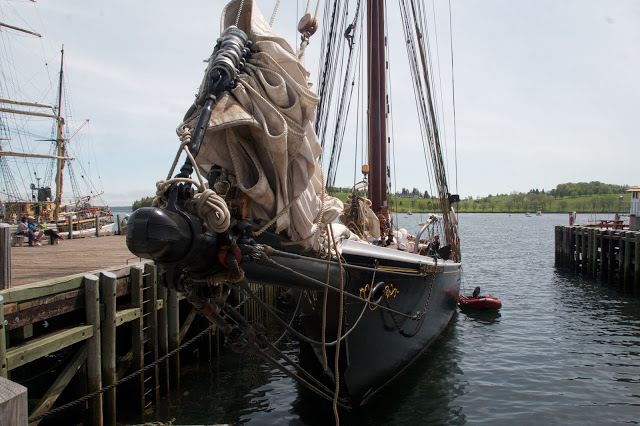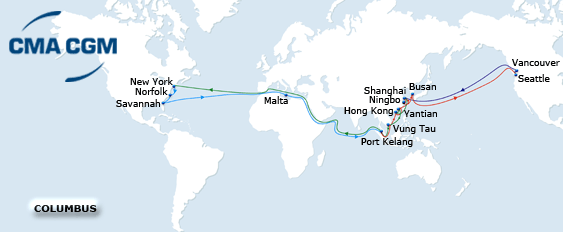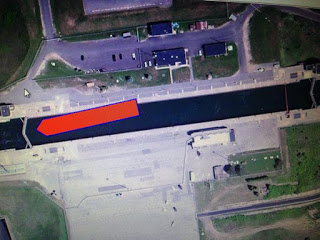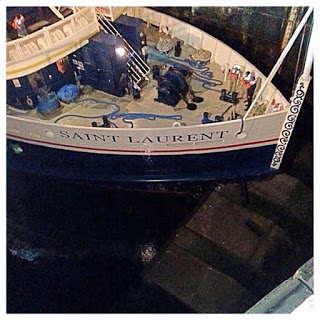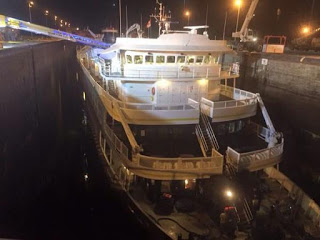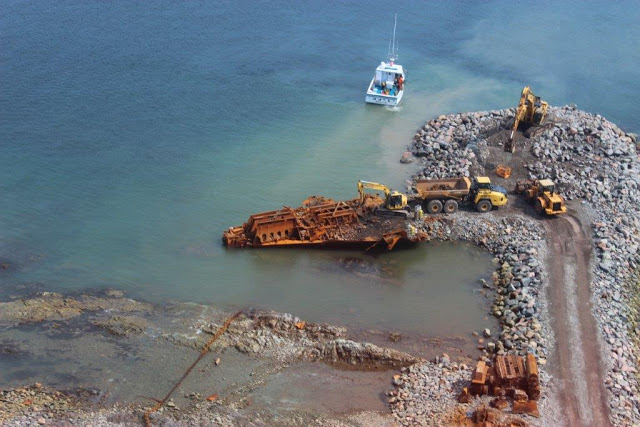WATCH Defence Minister Jason Kenney LIVE here at 1 pm ET
CBC News has learned that Defence Minister Jason Kenney will announce today a plan for Quebec’s Davie shipyard to retrofit a commercial cargo ship to serve as a temporary naval supply ship.
CBCNews.ca and CBC News Network will livestream his announcement at National Defence Headquarters in Ottawa starting at 1 p.m. ET.
Davie shipyard is located in Levis, Que., the riding of Public Safety Minister Steven Blaney
UPDATE: DND Posted the Press release early. These are the Key Parts:
The earlier than anticipated retirement of the Protecteur-class ships has resulted in an unexpected loss of both capacity and capability for the RCN during this transition to the future fleet. The Government of Canada will enter into discussions with Chantier Davie to see if arrangements can be made for an interim ship that provides a solution at a cost, time, and level of capability acceptable to Canada and the Royal Canadian Navy (RCN).
Interim Auxiliary Oil Replenishment Capability
The Government will enter into preliminary discussions with Chantier Davie Canada Inc. to determine if it can provide an interim supply ship at a cost, time, and level of capability acceptable to Canada and the Royal Canadian Navy. Should the Government of Canada decide to pursue a provision of service contract agreement, it would provide a required interim ship to bridge the gap until the first JSS is delivered.
The provision of service contract agreement would be for a commercial ship to be refitted for military use. An interim supply ship would provide a more modest capability and would not conduct full-spectrum military operations in high-threat environments.
The Full release:
The Royal Canadian Navy (RCN) is in the midst of the most intensive and comprehensive period of fleet modernization and renewal in its peacetime history, touching upon all elements of the fleet.
This period of transition includes the modernization of its 12 Halifax-class frigates, the retirement of two Protecteur-class replenishment ships and two Iroquois-class destroyers and the procurement of three new classes of ships, including the Joint Support Ships (JSS), the Arctic/Offshore Patrol Ships and the Canadian Surface Combatants, as well as the integration of new maritime helicopters into fleet service.
The earlier than anticipated retirement of the Protecteur-class ships has resulted in an unexpected loss of both capacity and capability for the RCN during this transition to the future fleet. The Government of Canada will enter into discussions with Chantier Davie to see if arrangements can be made for an interim ship that provides a solution at a cost, time, and level of capability acceptable to Canada and the Royal Canadian Navy (RCN).
Retirement of HMCS Protecteur and HMCS Preserver
On September 19, 2014, Vice-Admiral Mark Norman, Commander of the Royal Canadian Navy, announced the retirement of the Navy’s legacy refueling fleet. HMCS Protecteur was an AOR ship based in Esquimalt, BC, and the lead ship of the Protecteur-class. Its sister ship, HMCS Preserver, was based in Halifax, NS.
HMCS Protecteur was retired after sustaining serious damage in a fire in February 2014. An extensive assessment concluded that the ship was damaged beyond economical repair. Considering the relatively short service life remaining for HMCS Protecteur, which was scheduled to be retired in 2017, the cost to re-instate the ship to full operational capability did not represent the best use of public funds.
HMCS Preserver was scheduled for retirement in 2016, but engineering surveys done in 2014 identified levels of corrosion that had degraded the structural integrity of the ship below acceptable limits. As a result, the cost to reinstate the ship to full operational capability also did not represent a responsible use of public funds.
These unexpected circumstances have resulted in the urgent need for Canada to obtain refuelling capacity in the short term to bridge the gap until the first Joint Support Ship is delivered.
The future Joint Support Ships
The Joint Support Ship (JSS) project is designed to increase the range and endurance of the Canadian Armed Forces by enabling naval task groups to stay at sea for long periods without obtaining provisions from ashore. The Joint Support Ships will supply deployed Naval Task Groups with fuel, ammunition, spare parts, food and water. They will also provide an at-sea platform for maintenance and operation of helicopters, a limited sealift capability, and support to operations ashore.
As the selected shipyard for non-combat vessels, Vancouver Shipyards will be responsible for the construction of both Joint Support Ships at their shipyard in North Vancouver, British Columbia.
The two Queenston-class Joint Support Ships (JSS) will replace the Royal Canadian Navy’s Auxiliary Oiler Replenishment vessels. The new ships will provide core replenishment, sealift capabilities, and support to operations ashore. The Queenston-class will be capable of operating across a full spectrum of threat environments.
The JSS are a critical component for achieving success in both international and domestic CAF missions. The ships constitute a vital and strategic national asset. The presence of replenishment ships increases the range and endurance of a Naval Task Group, permitting it to remain at sea for significant periods of time without going to shore for replenishment.
Interim Auxiliary Oil Replenishment Capability
The Government will enter into preliminary discussions with Chantier Davie Canada Inc. to determine if it can provide an interim supply ship at a cost, time, and level of capability acceptable to Canada and the Royal Canadian Navy. Should the Government of Canada decide to pursue a provision of service contract agreement, it would provide a required interim ship to bridge the gap until the first JSS is delivered.
The provision of service contract agreement would be for a commercial ship to be refitted for military use. An interim supply ship would provide a more modest capability and would not conduct full-spectrum military operations in high-threat environments.

